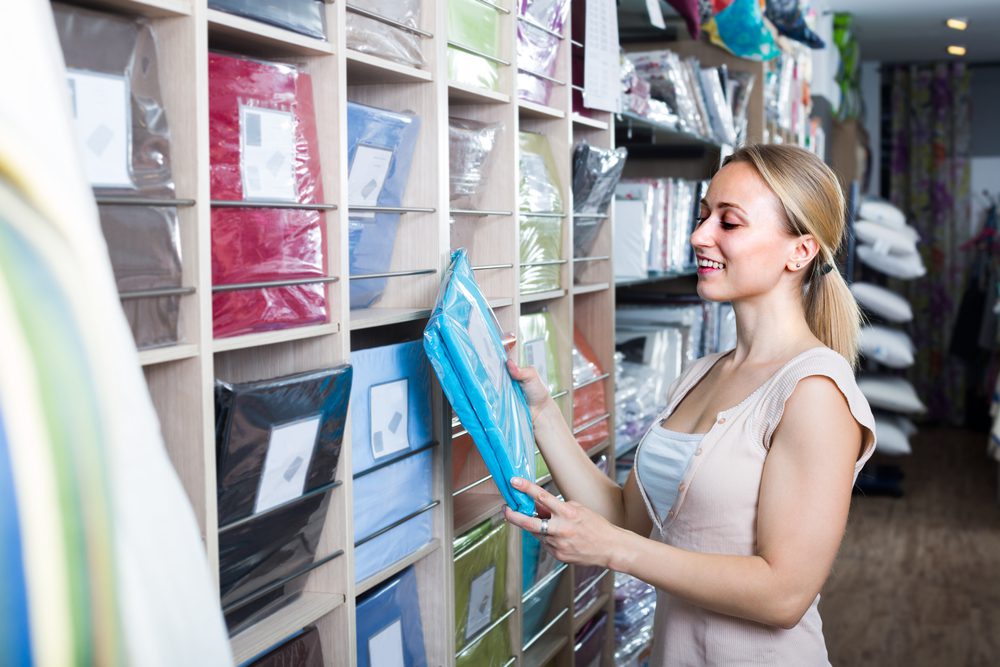Selecting the right sheets can be as important to overall comfort as choosing the ideal mattress. While the mattress supports you, the sheets make the closest contact with your body.
Egyptian cotton and sateen sheets are two popular options. We’ll look at the similarities and differences between Egyptian cotton and sateen sheets, examining their pros and cons, how they’re made, and how the two overlap.
What Separates Egyptian Cotton From Other Types of Cotton?
Egyptian cotton is a luxury bedding material. Fabric made of Egyptian cotton tends to be exceptionally durable, soft, and breathable.
While most famously grown in Egypt, the Gossypium barbadense species of cotton originated in South America. This variety of extra-long staple cotton is now grown commercially around the world, but the moderate climate of the Nile Delta region in northern Egypt provides the right balance between sun, rainfall, and humidity for it to flourish, while the rich soil around the Nile provides the necessary nutrients.
Egyptian cotton is traditionally hand-picked rather than collected by machines. This labor-intensive harvesting prevents the fibers, or staples, from being cut short. Longer fibers make for stronger, smoother bedding, earning Egyptian cotton sheets a reputation for quality.
Breakdown of Egyptian Cotton Sheets
Sheet Type | Description | Pros | Cons |
|---|---|---|---|
Egyptian Cotton | This premium cotton with extra-long staples is traditionally picked by hand to preserve fiber length. The resulting sheets are usually stronger, softer, and longer-lasting than short-staple cotton sheets. |
|
|
Is Egyptian Cotton Considered a Luxury Item?
True Egyptian cotton is considered among the most luxurious bedding materials due to its softness, smoothness, and durability.
With appropriate care, Egyptian cotton sheets can last well over a decade. While most Egyptian cotton sheets can be machine washed and dried, air drying is often preferable. They typically get softer the more they’re washed, so they may become more comfortable over time. Egyptian cotton sheets generally cost more upfront, but many sleepers believe their longevity and luxurious feel make them a worthwhile investment.
Is There Another Type of Cotton as Good as Egyptian Cotton?
Other extra-long staple cotton sheets can provide a similar experience to Egyptian cotton at a lower price-point.
Pima cotton is one of the most popular alternatives. It comes from the same species of plant, shares Egyptian cotton’s extra-long staples, and also produces soft, durable sheets. The main difference is that Pima cotton is primarily grown in the United States, Australia, and Peru.
How Do You Know if Your Sheets Are Genuine Egyptian Cotton?
The most reliable way to verify that your sheets are true Egyptian cotton is to look for Cotton Egypt Association (CEA) accreditation. The organization performs DNA testing to confirm that products use authentic Egyptian cotton. In addition, you should research the company and read reviews to investigate its reputation before paying a premium price for sheets.
Because of the popularity of Egyptian cotton, many manufacturers leverage the term for marketing purposes while actually using other materials. This can inflate the price tag without providing the quality of true Egyptian cotton. Some counterfeiters may also fake the Cotton Egypt Association seal.
Egyptian cotton sheet sets typically cost several hundred dollars. If a set costs much less than that, it may be a tipoff that it doesn’t contain pure Egyptian cotton.
Shop the Best Sheets of 2024What Are Sateen Sheets?
Sateen is a weave rather than a type of fiber. It uses a one yarn under, three or four yarns over pattern. Many different kinds of fibers can be woven into a sateen pattern, including polyester, rayon, and cotton.
Since this weave exposes more of the thread, sateen sheets tend to be smooth and lustrous. The sateen weave is also tighter than many alternatives, leading to higher average thread counts and a more substantial feel. To some sleepers, this feels cozier. However, it may also contribute to heat retention, so make sure your sleeping environment accounts for your temperature preferences.
Sateen sheets typically have a polished appearance due to their elegant drape, resistance to wrinkles, and subtle sheen. While available at a wide range of price-points, sateen sheets often look and feel luxurious.
Other noteworthy weaves include percale and twill. Percale is lighter, crisper, and more breathable than sateen. However, it is also more prone to wrinkling. Twill is a sturdy weave that is durable, drapes well, and is wrinkle-resistant. That said, twill generally feels coarser against the skin than sateen.
Breakdown of Sateen Sheets
Sheet Type | Description | Pros | Cons |
|---|---|---|---|
Sateen | This versatile weave can be used with cotton, rayon, polyester, or other materials. The resulting fabric is usually smooth and lustrous. |
|
|
Can Egyptian Cotton Be Woven Into a Sateen Weave?
Egyptian cotton can be readily woven into a sateen weave. Doing so generally combines the softness, breathability, and durability of Egyptian cotton with the silky look and feel of sateen sheets.
Get Your Sleep Questions Answered Live on 4/30
Have questions about sleep? Get all your sleep-related questions answered in a Live Q&A on YouTube with renowned sleep expert Dr. Michael Breus at 5 p.m. PST/8 p.m. EST.







